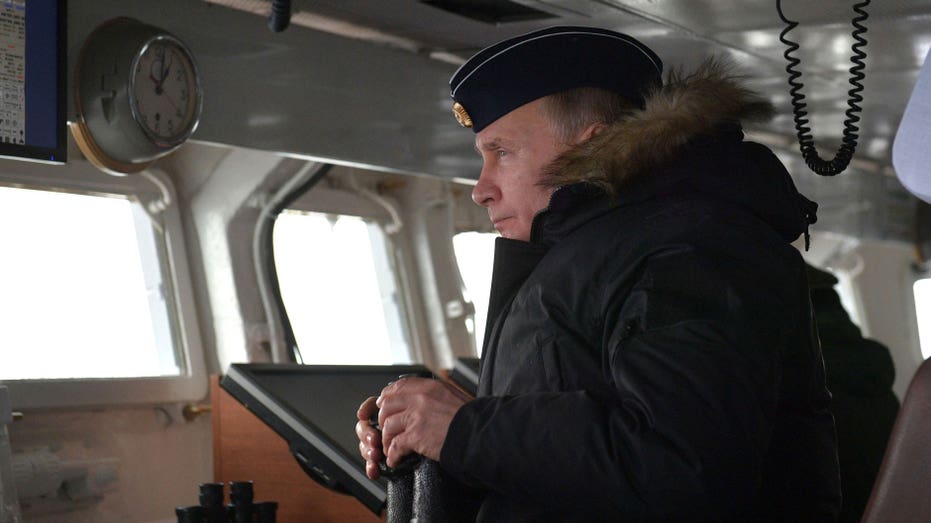Putin Escalates 'Ghost Fleet' Security Threats Amid NATO Baltic Sea War Games
NATO exercise highlights alliance unity amid rising tensions over Russia's shadow fleet and regional security threats in the Baltic Sea.

NATO's naval forces are making a powerful show of unity and readiness in the Baltic Sea this June, as the annual BALTOPS exercise unfolds amid heightened regional anxieties. More than 50 vessels crewed by thousands from 17 allied nations have converged for these maneuvers, underscoring a collective commitment to defending the waters that border eight NATO members and just one non-NATO state—Russia. The U.S. Navy’s 6th Fleet is at the helm of these exercises, with senior commanders declaring this year’s event as “more than just an exercise”, but a clear signal of the alliance’s resolve and adaptability.
This demonstration of NATO’s maritime capabilities comes at a time when tensions with Russia are particularly acute. Over the past year, there has been mounting concern in the region regarding Moscow's activities, including a series of mysterious incidents involving undersea cables. Western intelligence agencies continue to suspect Russia’s so-called “ghost fleet” of involvement. These aging tankers—operating under foreign flags—are believed to support Russia’s wartime economy by dodging sanctions, but they are also linked to more sinister roles such as sabotage, illicit military trade, and covert intelligence gathering.
One high-profile incident currently under investigation involves crew members from a suspected “shadow fleet” ship, now facing charges in Finland after allegedly damaging a critical undersea cable. Investigators say the ship dragged its anchor for more than 60 miles, causing substantial disruption. Such events spotlight both the vulnerability of regional infrastructure and the increasing complexity of maintaining maritime security amid evolving Russian tactics.
As NATO toughens its approach, launching more aggressive stop-and-search operations against suspicious vessels, Russia has responded by publicly promising to deploy naval escorts for its shadow fleet through the Baltic. This move has drawn serious attention from local defense ministers, who warn that Moscow’s willingness to openly shield these suspect vessels represents an escalation in the ongoing cat-and-mouse game in the region’s cramped and strategically vital waterways.
Officials caution that this uptick in military activity raises the risk of unintended confrontations. The geography of the Baltic Sea—with its narrow shipping lanes, overlapping territorial waters, and dense commercial traffic—means that even minor miscalculations could quickly spiral. Moreover, longstanding communication channels between NATO and Russian navies, once relied upon to diffuse tensions, have largely fallen silent, exacerbating the danger of confusion or accidental clashes.
Despite Russia’s increasing assertiveness, questions remain about its actual capacity to protect every vessel in its shadow fleet. While Russia’s Baltic Sea fleet is acknowledged as the largest national navy operating in these waters, many experts describe it as under-resourced and facing significant logistical challenges. Nonetheless, Russian ships possess certain specialist capabilities suited for the shallow and complex terrain of the Baltic, including expertise in navigating the archipelagos that dot the region.
This year’s war games feature prominent U.S. assets like the USS Paul Ignatius and the command ship USS Mount Whitney, offering reassurance to smaller NATO navies and serving as a visible reminder to Russia of the alliance’s combined power. Recent incidents, such as Estonia’s attempt to board suspected shadow fleet vessels, highlight the ongoing cat-and-mouse dynamic. While some ships yielded to inspection, others refused outright—particularly when accompanied by Russian escorts—raising fresh questions about how NATO can effectively counter this challenge without sparking further escalation.
The alliance, however, appears committed to confronting the problem head-on, whether through persistent naval challenges or new legal mechanisms aimed at making it harder for shadow fleet ships to operate freely. As the situation evolves, Baltic governments are determined not to back down, signaling that NATO intends to keep up the pressure on Russia’s shadow fleet while safeguarding the critical sea lanes and infrastructure that are so vital to the region’s stability.




